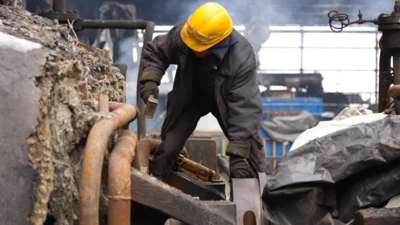We've updated our Privacy and Cookies Policy
We've made some important changes to our Privacy and Cookies Policy and we want you to know what this means for you and your data.
The rocket that eats itself
Image source, Getty Images
Top Stories
- Author, Ken Macdonald
- Role, ґуПуґ«ГЅ Scotland Science Correspondent
Engineers in Scotland and Ukraine have begun testing a rocket that "eats itself".
It will lift satellites into orbit by burning its own body as fuel.
Rocketry is a wasteful business. A rocket uses most of its energy lifting its own weight into space. Its payload is typically just a fraction of that.
A team from the University of Glasgow and Oles Honchar Dnipro National University in Ukraine have created a rocket engine to change that.
Top Stories
It burns a solid propellant rod that doubles as the rocket body itself.
A rigid tube of polyethylene fuel encloses a core of powdered oxidiser. This "propellant rod" is forced into the rocket engine where the two components are separated, vaporised, mixed and burned to create thrust.
Top Stories
Writing in the Journal of Spacecraft and Rockets, the team call it an "autophage" rocket, meaning it is something that eats itself.
Typically a solid-fuelled rocket behaves much like a firework: once the blue touch paper has (metaphorically) been lit you have little option but to stand clear and watch it go.
The new design adds a significant feature. By varying the speed at which the fuel rod is forced into the engine, the thrust can be varied as in a liquid-fuelled rocket.
Being able to throttle a rocket means its thrust can be reduced when reaching "max Q" - the spell of maximum aerodynamic pressure when rising through the atmosphere - and throttled back up again as the air thins.
Throttling thrust also means a payload can be more precisely placed in orbit.
Cheaper option
Dr Patrick Harkness, senior lecturer at the University of Glasgow's school of engineering, says the design means the rocket will get shorter as it climbs higher:
"During the ascent the engine will work its way up along the body of the rocket, consuming [it].
"So by the end of the flight, only the payload and the empty engine enter space.
"That means we put less debris up there."
It would also be cheaper than existing rockets and, because the design can be scaled down for smaller payloads, it would be ideal for lifting small satellites of the kind which are already being built in Scotland in their dozens.
Currently these Cubesats have to wait to travel into space as passengers on the launches of large rockets like the Russian Soyuz.
A rocket dedicated to a single satellite would mean it could go straight to its intended orbit.
The new design works. The engine is already turning a propellant rod into thrust in a laboratory in Ukraine.
An application is being made for EU funding to take it from there towards the launch pad.
Given that several sites in Scotland are competing to become a spaceport, it could be coming to a launch pad near you.
Top Stories
More to explore
Most read
Content is not available








